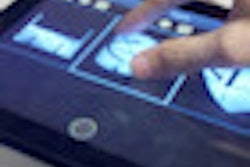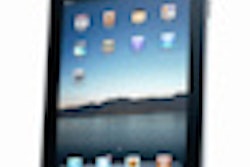CHICAGO - Apple's iPad 2 can be used safely and effectively for 2D reviews of virtual colonoscopy images, but using the device for this purpose takes longer and may require extra training, Italian radiologists have found.
"The iPad 2 may also find a role for image sharing and for teaching. The limitations of 2D reading should be overcome by the introduction of software tools," noted Dr. Emanuele Neri, president of EuroPACS and chair of the Radiology Informatics Committee of the Italian Society of Radiology, in a scientific e-poster presented at the RSNA 2011 meeting.
Neri and his colleagues evaluated the effectiveness of 2D image review of virtual colonoscopy (also known as CT colonography or CTC) datasets on the iPad 2 with OsiriX open-source software. They retrospectively reviewed 23 VC exams performed in a colorectal cancer screening setting. The images were acquired in supine and prone positions using a low radiation dose and a fecal tagging protocol based on oral administration of iodinated contrast material.
All datasets were wirelessly imported in DICOM format on an iPad 2 (64 GB) running OsiriX 3.9 software from an iMac desktop computer connected to the hospital PACS (Synapse, Fujifilm) and a 64-slice LightSpeed VCT system (GE Healthcare). Image transmission to the PACS or CT scanner to the iMac was performed by DICOM send and query/retrieve.
Image transmission from the iMac to the iPad 2 was based on the Bonjour protocol, which allows users to set up a network without any configuration. Apple introduced the Bonjour software in August 2002 as part of the Mac OSX v10.2 under the name Rendezvous, before renaming it three years later. It enables computers, devices, and services on IP networks to automatically discover each other. This facility is built into all Mac OSX computers.
Two experienced raters read the datasets independently on the iMac and iPad 2. The detection rate and segmental localization of lesions were recorded for each dataset, as well as the time needed for complete reading of each VC exam. Image quality also was visually assessed using a three-point scale (1 = poor, 2 = fair, 3 = good).
In the review of a VC exam on the iPad 2, supine and prone views are displayed on the same screen and can be compared simultaneously.
All lesions detected on the iMac were also identified on the iPad 2, and their segmental localization was correctly assessed in all cases. Image quality was good with both devices, while image reading time was longer on the iPad 2 than on the iMac (5.32 ± 2.16 versus 3.51 ± 1.58 minutes, respectively; mean ± standard deviation, p < 0.05).
"Powerful mobile devices allow the display a large volume of medical images from several modalities without the need for dedicated standalone workstations. These devices include the GE Centricity, iPad 2, Infinitt Mobile Viewer, Fujifilm Synapse, and Aycan Mobile," Neri stated.



















